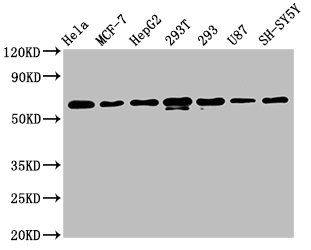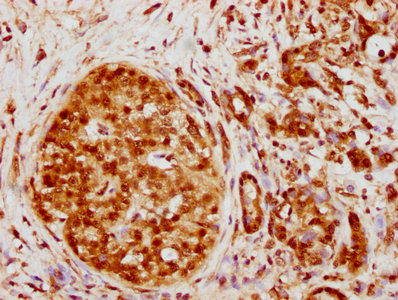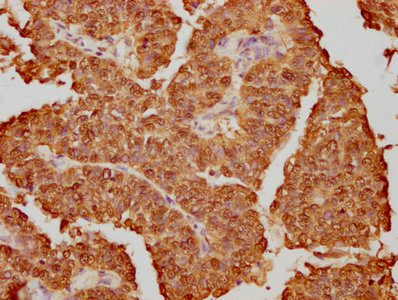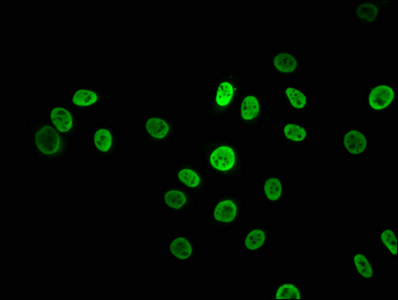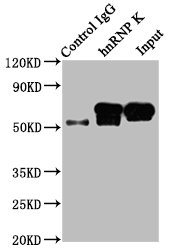The recombinant HNRNPK antibody production commenced with the obtaining of genes encoding antibody against HNRNPK. Antibody genes were obtained by sequencing and screening DNA reversely transcribed from RNA that was extracted from the B cells isolated from immunized animals. These genes were cloned into plasma vectors and subsequently transfected into a mammalian cell line for production. The product is the recombinant HNRNPK antibody. It underwent purification using affinity-chromatography from the cell culture medium. This recombinant HNRNPK antibody has been validated to detect the HNRNPK protein from Human in the ELISA, WB, IHC, IF, IP.
HNRNPK is a DNA/RNA-binding protein involved in multiple biological processes including the regulation of gene transcription, pre-mRNA splicing, mRNA nuclear export, mRNA translation, RNA stability, chromatin remodeling, and decay. Dysregulation of HNRNPK is related to carcinogenesis, cancer development, progression, and prognosis. In some malignancies, HNRNPK is linked to dismal prognosis. In addition to oncogenic functions, HNRNPK, ad a transcriptional co-activator of p53, may act as a tumor suppressor and loss of HNRNPK was prone to cause tumorigenesis.

